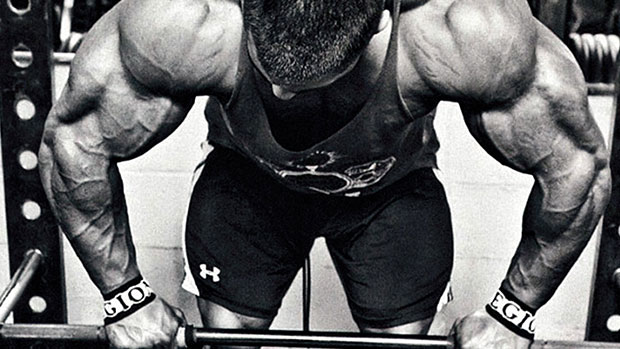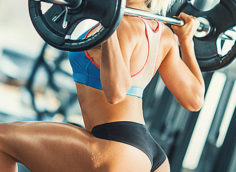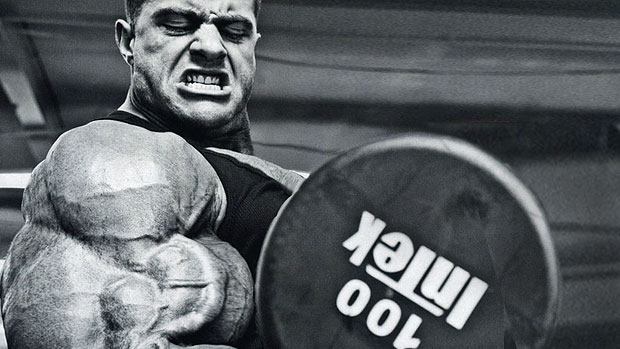Here's what you need to know...
- Before choosing a training program, make sure your goals are in line with what that plan can deliver.
- Starting Strength will get a new lifter stronger in the basic lifts while he learns excellent technique. However, exercise selection is very limited and there's little to no leeway for different body types.
- CrossFit's random workouts keep things interesting, but there's little in the way of programmed progression if you only follow the workout of the day. It's fine for those who want to lose some fat and exercise, not the best choice for those who want to train.
We invest hours in the gym expecting it to pay off. If that training doesn't deliver we have to wonder if it was the plan's fault or our own. Following the wrong training program can result in tons of wasted time and energy. Even a time-tested, reliable plan with a track record of results can be the wrong choice if a lifter's goals aren't in line with what that routine can deliver. You wouldn't use a low volume strength-focused routine if your goal was fat loss and you wouldn't follow a bodyweight-exercise program if your goal was to deadlift 500 pounds. Let's look at two popular training programs and see if they're really the best choice for those using them.
Starting Strength
Mark Rippetoe's Starting Strength program has spent nearly a decade being hailed as a straightforward way to introduce beginners to the weight room. And Rippetoe would argue that if you've never truly focused on basic compound lifts, using his methods and basic linear periodization, then you may still be a newbie in terms of gains to be made, even if you've been "exercising" for years.
The squat-centric routine has lifters training three days per week, each session beginning with squats followed simply by either the flat bench press and deadlifts or the overhead press and power clean. Relatively-low volume in each workout (3x5 on most exercises after thorough warm-ups) helps to focus the lifter on technical mastery of each exercise while allowing ample recovery between sessions. Weight progressions are equally straightforward. Each workout adds 5-10 pounds per exercise, using linear periodization to allow steady progress as the beginner, as expected, slowly and steadily adapts.
This consistent, progressive loading allows the lifter to build a snowball of progress by coordinating the "newness" of weight training with significant recovery time. While some beginners may benefit from higher volume workouts, Rippetoe has argued that recovery (meaning ample nutrition and rest) is more beneficial than simply doing "harder" workouts.
Another key benefit of Starting Strength is that, by keeping the work sets restricted to a lower volume, the lifter builds strength and perfect technique on the most basic exercises. Prioritizing these two fundamental aspects from day one can give the lifter a headstart compared to his peers. The unfortunate fact is that safe and efficient exercise technique rarely rates high among the training priorities of many new lifters.
In addition to extremely thorough analysis and descriptions of exercise technique, Starting Strength allows the lifter to focus on "just" five reps at a time. Do five perfect reps, rest, do five more, rest, do another five and you're done. It's hard to screw up a set of five. It's possible, but it's hard. After several dedicated months of Starting Strength, a lifter can generally be found lifting heavier and with better form than someone of equal experience who hadn't been following a similar plan.
One of the biggest criticisms of Starting Strength, however, is with its limited exercise selection. It is true that the basic five exercises – squat, flat bench, deadlift, overhead press, and power clean – don't give any direct attention to the arms or calves, and give fairly limited attention to the chest, shoulders, back, and hamstrings. While Rippetoe has discussed assistance exercises, such as Romanian deadlifts, pull-ups, and barbell curls, they're not considered essential parts of the "basic" Starting Strength routine. The intention is to keep the beginner focused on improving only a small handful of big, basic exercises.
The idea clearly has merit, as evidenced by the scores of successful Starting Strength followers, but there are some individuals whose muscular development, due to unique limb lengths, varying leverages, or poor muscle firing, will eventually not benefit as much as possible from the strict compound-only lifting routine. Achieving a 185-pound overhead press, 275 bench, and 425 deadlift should generally help to develop some fairly well-built arms, especially if the lifter added one or two dozen pounds while reaching those strength levels, but that's clearly not going to be the case for everyone.
Would it hurt to add some barbell curls and French presses into the routine? Probably not, but then you're treading an already-thin line. Why not add just a few sets of lateral raises or cable rows? And, as a finisher, some leg curls and calf raises. Before you know it, you're doing more in a single session than you were doing all week.
If you're following Starting Strength and get the urge to include more exercises, it's a good indicator that some combination of your self-discipline, willpower, and/or attention span has reached its limit. At that point, it's definitely time to re-consider if your actions are truly aligned with your goals.
Another frequent gripe against Starting Strength is the idea of "GOMAD" – drinking a gallon of whole milk each day. It's a decades-old method for increasing muscular bodyweight. If you add 2,400 calories to your diet, you're going to get bigger. No duh. But "bigger" isn't always better, even in the weight training world.
Starting Strength has become synonymous with this high-calorie nutrition tip, and it's been blamed for more than a few inches of added bodyfat. The only trouble is, nowhere does Starting Strength say that every lifter following the training method should also follow GOMAD. In fact, Rippetoe, who does always clarify that GOMAD is intended for underweight beginners, has very clearly described the base recommended diet:
"Lots of protein, vegetables, fruits, and clean carbs. No effort should be made to lower dietary fat whatsoever, but watch the crappy carbs and sugar."
Simple? Yes. Muscle-friendly? Yes. Easy to overlook or somehow misinterpret? Sadly, yes. GOMAD plus three or four meals a day can help a lifter gain size, but can't, won't, and shouldn't be the go-to diet plan for every Starting Strength lifter.

CrossFit
In 1916, Alan Calvert, the founder of the Milo Barbell Company and editor of Strength Magazine, said a lifter who followed his training advice should "be able to 'put up' [overhead] a 150-pound barbell or tear two packs of cards... I also expect him to have enough strength and endurance to: clear a 5-foot fence at a bound, lift 500-600 pounds dead weight, and row, walk, or swim for miles without much effort or fatigue."
For nearly a full century, the idea of a well-rounded, athletic lifter has been a popular goal and, really, sort of common sense to avoid the "all show, no go" stereotype. The most recent and well-known training method to advocate this concept is CrossFit.
CrossFit training is officially defined as "constantly varied functional movement performed at high intensity." That might sound like a random mash-up of adjectives, but it's actually a succinct summary of the central CrossFit methodology.
No two workouts are identical – lifters can often go more than a month before repeating an exact session. Workouts are built on "functional movements" in the sense that they often combine big compound barbell lifts with basic or sometimes not-so-basic bodyweight exercises, and they're trained at a near-constant high intensity by regularly performing workouts "for time", aiming to cram maximum training volume within a fixed timeframe.
If the constantly-varied WODs (the "workout of the day" regularly posted on the CrossFit main site) have any commonalities, it's that they regularly train several physical attributes in each session – most often flexibility/mobility, strength endurance, power, and anaerobic endurance. It could be argued that those traits are critical, if not fundamental, to athletic performance and training them on a regular basis is a surefire way to build a lifter who's always ready for a pickup basketball game, a "fun run" race through the mud, or to help load couches and dressers when a buddy moves.
With Olympic lift variations, big barbell exercises (everything from the flat bench press to the controversial sumo deadlift high pull), classic bodyweight exercises (push-ups, pull-ups, squats, and burpees), gymnastic movement variations (including muscle-ups and handstand work), and a fondness for rowing machines and jump ropes, CrossFit workouts are major calorie-burners, especially since many workouts are performed circuit-style with minimal actual rest.
Combine the intense workouts with CrossFit's general nutrition advice – "In plain language, base your diet on garden vegetables, especially greens, lean meats, nuts and seeds, little starch, and no sugar" – and it's easy to see why it's earned a reputation for shredding fat. In addition to this advice, CrossFit is often associated these days with eating paleo or "caveman-style". As debatable as paleo eating may be, the idea of centering nutrition around meat, vegetables, and healthy fats is a no-brainer for improving physiques.
However, CrossFit's inherent WOD randomness is also a source of criticism. "Regularly irregular" workouts can make it difficult to gauge progress. Even with a detailed training notebook to refer back to, it's an added challenge when going lengths of time before repeating a given rep range or exercise.
If one were to simply train according to the WODs, with each workout being a surprise until logging on, there's no real way to predict what's in store other than knowing that a rest day comes after every third workout and each training session will be a new series of exercises in new rep ranges, and will often-but-not-always involve some type of cardio/conditioning work such as rowing, running, or jumping rope.
Looking at a random sample across six weeks of WODs, the most common rep ranges used were 50, 21, 15, AMRAP (as many reps as possible), and testing a one-rep max. While it's often encouraged to adjust WODs relative to your capabilities (known as "scaling") or break down high reps into smaller chunks as needed, looking at the workouts as prescribed shows a pretty vast discrepancy. You're either performing high to very-high rep work or literally going as heavy as possible, with relatively-little time spent in the middle. This lack of heavier lifting is another common critique, often remedied by lifters on their own. Pure strength work is noticeably absent from most prescribed WODs and, while load is a major variable that influences program design (everything from exercise choice to volume to weekly recovery), it's another undeniable foundation of a successful athlete.
The sport of CrossFit compared to the CrossFit training method can also be a blurry line, but it's one that may be comparable to competitive powerlifting. Even though X, Y, and Z are required on the day of the contest, the lifter doesn't necessarily have to exclusively perform X, Y, and Z in training. This is evidenced by the many, many successful CrossFit competitors that modify or flat-out avoid performing only WODs when preparing for a CrossFit competition. When the best of the best in the CrossFit Games don't follow strict CrossFit programming in order to perform well at the sport of CrossFit, it can leave the spectator/recreational lifter in a curious and confused place.
For the non-competitor, sticking to the WODs as dictated and scaled appropriately can be a reliable method for the good old fashioned "get into shape" goal. But one trap that lifters sometimes fall into is having that goal gradually morph into wanting to "get good at CrossFit", or exercising to get better at exercising.
But is that very different than a recreational/non-competitive powerlifter whose primary focus in the gym is increasing their squat, bench, and deadlift? Again, it's a blurry line. Having a goal that keeps you returning to the gym is great, but that goal should always be helping you move forward, rather than allowing you to spin your wheels feigning progress.
Does Your Plan Match Your Goals?
If you read closely, you noticed that nearly every "problem" associated with a given training program faults the lifter as much the routine. That's because the human factor will always be the swing-vote in deciding whether a program leads to progress, leads to some kind of circular holding pattern, or leads to regression.
Some people "work out", satisfied with simply doing something in the gym a few days a week. With these guys, it doesn't matter what program they follow because all "results" will be nearly the same. Some people train, going into each workout planning to improve upon the last session while moving forward overall. These are the lifters who put mental energy into choosing, and eventually designing, the type of plan that will keep propelling them down the path.
And some people train for something, generally a sport or a specific, deadline-limited target. These are the lifters who stand the most to gain by regularly reviewing their progress and adjusting their plan accordingly. Now, where do you fit in?





